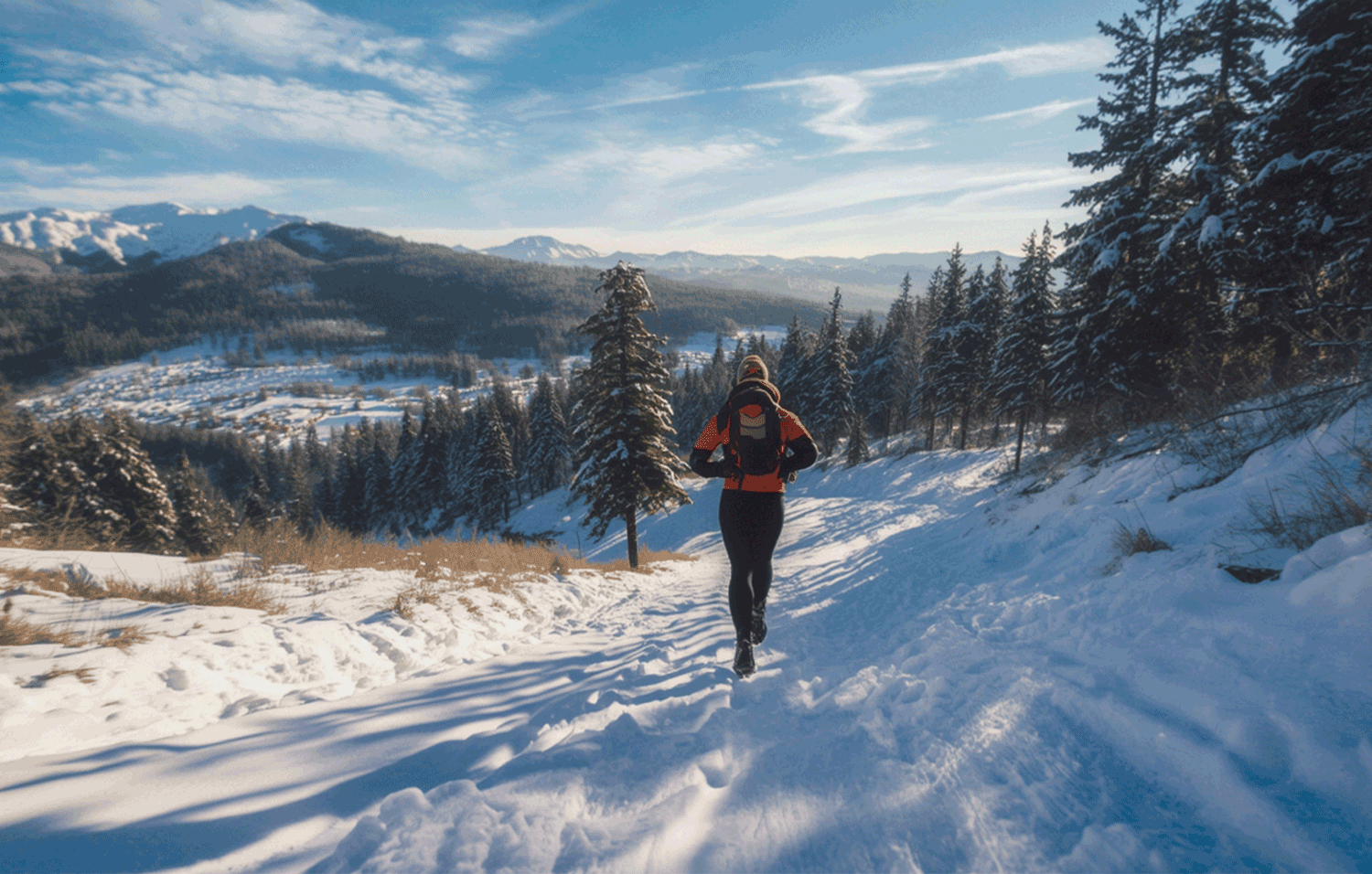Guide to Traction Devices for Winter Trail Running
Winter trail running traction devices are built to enhance both safety and performance when the trails turn icy or slick. There are three main types to choose from: spikes, microspikes, and winter trail shoes.
Spikes use long, aggressive metal points that bite into hard-packed snow and ice, making them ideal for steep hills, frozen slopes, and technical terrain where secure footing is crucial.
Microspikes, on the other hand, are smaller, lighter, and more flexible, offering a good balance between grip and mobility. They perform best on moderate frost, packed snow, or mixed winter trails where footing varies.
For runners tackling lighter winter conditions, winter trail shoes with specialized rubber soles and deep traction lugs provide reliable grip without the need for an added device. Each option serves a specific purpose, and understanding their differences helps you choose the right setup for your preferred terrain and weather conditions.
Evaluating Trail Conditions
Before heading out, it’s important to assess trail conditions carefully to determine which traction device will perform best. Take note of factors such as ice coverage, frost thickness, snow depth, and the overall gradient of the terrain. Steep or technical trails with exposed ice often call for the added grip of spikes to ensure maximum safety and control.
On the other hand, flat or gently rolling routes with light frost typically don’t require that level of aggression. Microspikes usually provide more than enough traction. Mixed terrain adds another layer of complexity, with alternating sections of ice, dirt, or mud demanding a balanced approach.
Overly aggressive spikes can slow you down or feel awkward on soft ground, while lighter microspikes may not bite deeply enough on hard ice. Whenever possible, check recent trail reports, talk to local runners, or scout the area yourself before committing to a device. Taking a few minutes to evaluate conditions can make the difference between a safe, efficient run and a frustrating or risky one.
Consider Distance and Terrain Variability
Distance affects your traction needs. Longer runs can cause fatigue, reducing balance and reaction time. Devices that maximize grip without adding weight, like microspikes, are ideal for endurance runs. For short but very icy or technical trails, spikes may be better.
Mixed-terrain runs require compromise. Some runners even carry a secondary device to swap in if conditions change during long runs. This ensures continuous traction and can help prevent injury when running with the wrong device.
Proper Fit and Adjustment
Fit is critical for safety and performance. Microspikes and spikes must sit snugly over your shoes. Adjustable tension systems allow secure placement without pressure points. Ill-fitting devices can twist or move mid-run, creating tripping hazards or uneven wear. Always test new devices on short runs to become familiar with their feel. And check the tension periodically during long runs. Properly fitted devices should engage consistently with the trail for predictable stability.
Adapting Your Stride and Gait
Using traction devices changes how your feet connect with the ground, so adjusting your running mechanics becomes essential. A slightly shorter stride helps maintain balance on icy surfaces, while landing closer to the mid-foot or with a flatter strike improves traction and reduces the chance of slipping.
You may also find that increasing your cadence keeps your rhythm steady and your momentum consistent. Focus on lifting your feet just enough to clear small obstacles that might be hidden under frost or light snow. Practicing these adjustments on easier, more controlled trails first allows you to adapt gradually, building muscle memory and confidence before tackling more challenging winter conditions.
Maintenance and Environmental Awareness
Regular inspection and maintenance of your traction devices are essential for both performance and safety. Check spikes and microspikes often. Pay attention to any bent, broken, or worn points that could reduce grip. Examine the rubber harnesses as well, since cold temperatures can make them brittle or cause small cracks that compromise flexibility and fit.
Trail conditions can also change quickly. Frost can melt, ice can soften into slush, and snow can compact into a slick surface. Staying alert and ready to adapt is key.
It’s always a good idea to carry a small tool or know how to make quick adjustments if tension shifts during your run. Keeping your gear in top condition not only extends its lifespan but also ensures consistent traction and maximum safety throughout the winter season.
Comfort and Injury Prevention
Traction devices can subtly alter your running mechanics, adding weight and slightly changing how your foot strikes the ground. These adjustments may increase fatigue or place new demands on muscles and joints, so finding the right balance between protection and efficiency is important.
Wearing properly fitted footwear helps reduce friction, hotspots, and blisters, while small tweaks to your gait can ease pressure on your knees, hips, and ankles.
Preparing your body for the extra effort also matters. Layer appropriately for warmth, take time to warm up before running, and stretch afterward to maintain flexibility. The more you practice with traction devices, the more confident and natural your stride will feel, allowing you to move safely and comfortably across icy or frosty trails.


